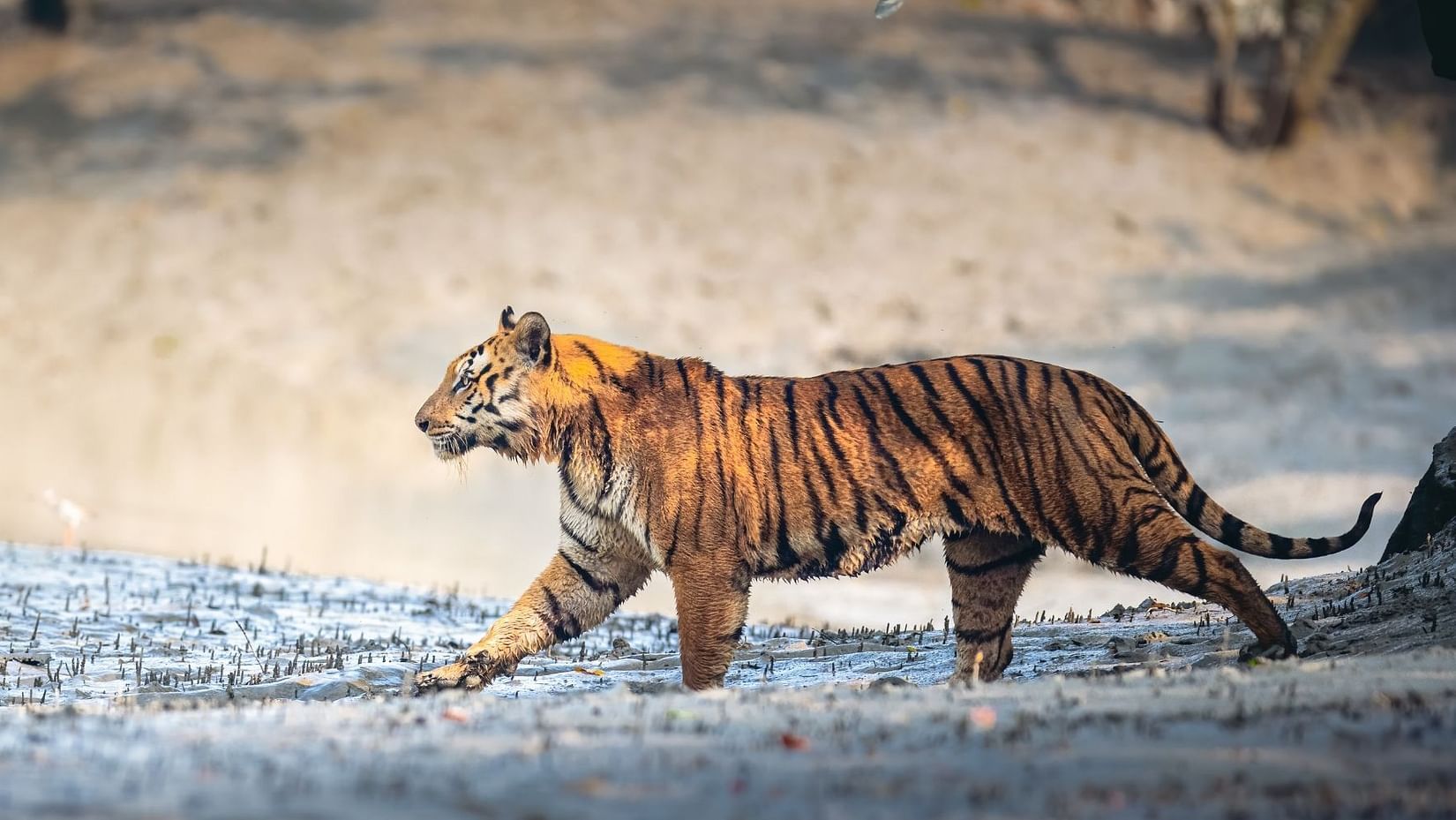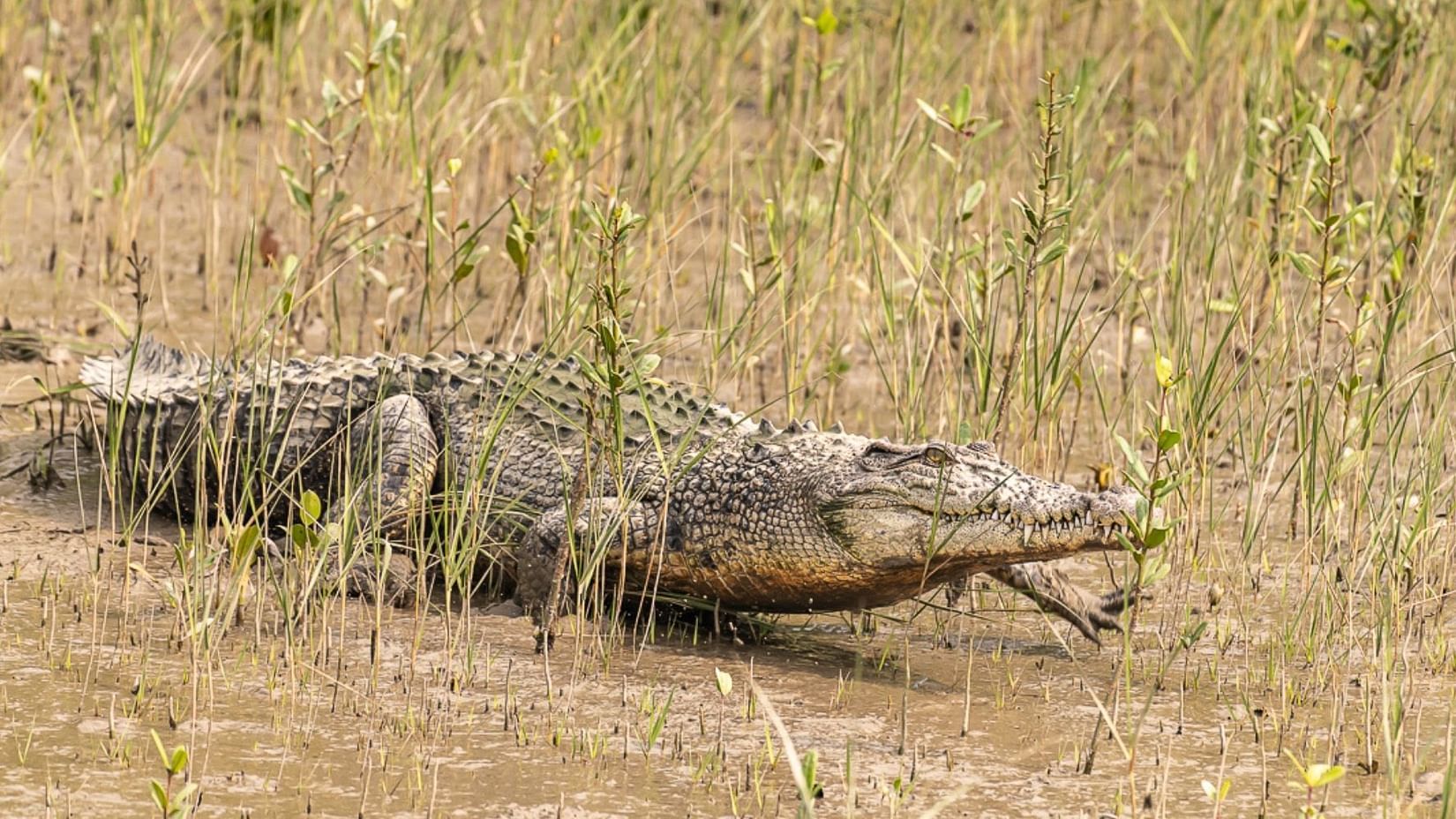- Fascinating Facts About the Sundarbans
- Manushi Chhillar at The Riverwood Forest Retreat, Dooars
- Holiday to the Land of Mowgli
- The Butterfly Lifecycle
- Interesting Facts About Pench Tiger Reserve: The Land of Iconic Tigers
- Butterfly Garden in Pench, Kanha and Dooars
- 7 Differences Between Butterflies and Moths
- Animal Facts
- Discovering the Avian Treasures of Sundarbans
- Safari Tips

Tiger Facts
Scientific name: Panthera tigiris.
Tigers are the biggest cats in the world, weighing up to 500 pounds and 6 feet in length, not including a 3-foot tail. Tigers have been classified into 5 subspecies. These are the Royal Bengal, Siberian, Indo-Chinese, South-china and the Sumatran tiger. The Bali Tiger is now extinct. Loss of habitat was the main cause of this subspecies extinction. There are a total of 29 Tiger Reserves in India. They cover approximately 1.17% of the total geographical area. Just like the human fingerprint, the stripes on the tiger are unique to that individual. In fact, people who thoroughly observe the tiger population of an area can distinguish between them. Tigers have enhanced vision as compared to us humans. They see 6 times better! A tiger can eat 80 pounds of meat in one sitting. A tiger makes a successful kill once in every twenty attempts. They are ambush predators and must rely on their stealth and not speed. They hunt mainly at dawn and dusk. India has the largest population of wild tigers in the world. The most recent tiger count yielded a truly disturbing figure. Only 1400 individuals are left. A captive tiger has never been successfully reintroduced into the wild because a human surrogate mother cannot teach the cubs the skills they would have learned in the forest as cubs. The life expectancy of the tiger is between 10 – 15 Years in the wild, and 15 – 20 in captivity. Last but not the least Tigers are on the list of endangered species. Radical conservation steps need to be taken to save this beautiful cat.

Estuarine Crocodile Facts
Scientific name: Crocodylus porosus
The estuarine crocodile is commonly called as saltwater crocodile as this is one species that can tolerate salt water concentration as found in the oceans. However they are also found in inland water bodies. Found: Southeast Asian coastlines of different countries and Northern Australian shores and estuaries. The scientific name is Crocodylus porosus, where porosus means the bumpy nature of adult’s snout. They are the longest crocodilian species on the earth (of the living reptilian species). They can hit a length of about 6 meters (20 feet). They are brightly coloured with intriguing patterns of yellow or lime green. Youngsters are very colourful and have glowing eyes. They prey on varieties of animals starting from fish, crabs, young turtles, insects, rats, mice, frogs, toads, birds, young and small mammals. They are aggressive and can bring down even grown up antelopes and buffaloes. They hunt in packs too, if required, though most of their lives they are solitary hunters. They tolerate other adults in the vicinity, except during mating times. The fourth teeth in its lower jaw will protrude outside like a very long dagger even after the jaws are closed shut. The teeth are replaced at regular intervals. The fights between males to win a mate lead to fatal injuries or at times death itself. They mate underwater. The males are larger than the females. Females are almost half the male’s length in comparison. Gender is decided by the temperature of incubation. Normally eggs incubated above 35°C and below 30°C are females. The eggs incubated in that 5°C range are males. Mother has to break open the nest mound and carry her newborns to the water. The young ones readily take care of themselves and become efficient hunters once the nutrients in the yolk sac attached to them are used up. They are known to attack humans, as they are strong and huge. However, one can escape from these dangerous jaws with a few safety measures when encountering one.
)
Sambar Deer Facts
Scientific name: Cervus unicolor
The scientific name of Sambar Deer is Cervus unicolor. The Sambar deer averages between 6 and 8 feet in length. The weight of an adult sambar deer ranges between 240 and 570 pounds. They generally have a life span ranging from 16 to 20 years. It is found is a variety of habitats including swamps, forests, open scrublands and farm fields. Sambar deer are found throughout India, southern China, Taiwan, Malaysia, and the Philippines. They have also been introduced into Australia, New Zealand, and the United States. Unlike most animals, the sambar deer does not have a well-defined breeding season. These animals are typically nocturnal and solitary; however, during certain times of the year it is common to see a group of six or seven animals. The senses of sambar deer are highly developed, which helps them in detecting their predators easily. Whenever they perceive danger, they start giving a repetitive honking alarm call. The sambar is a very good swimmer.